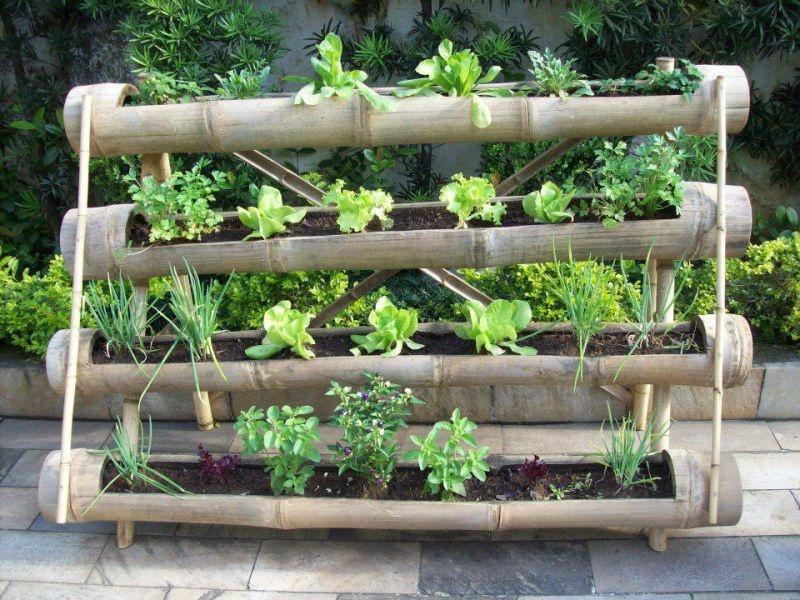The theme of vertical gardening a few years ago interested me seriously. Although the shortage of land on its 24 acres I have not experienced, the idea to have garden and vegetable crops not only in the horizontal but also in the vertical plane, seemed curious and practical. And this time I want to share with you the ideas found in different sources of arrangement of vertical gardens in the garden and offer to exchange views on their pros and cons.
Start probably worth it with a brief overview of the methods of construction of vertical kitchen gardens. There are so many of them, and every gardener can invent something of his own. The most popular, perhaps, all sorts of” shelves ” and designs that resemble a children’s pyramid. To create them and use old tires of different diameters, and conventional boards, and metal strips, and ready — made boxes, and curb tape-who has what at hand.
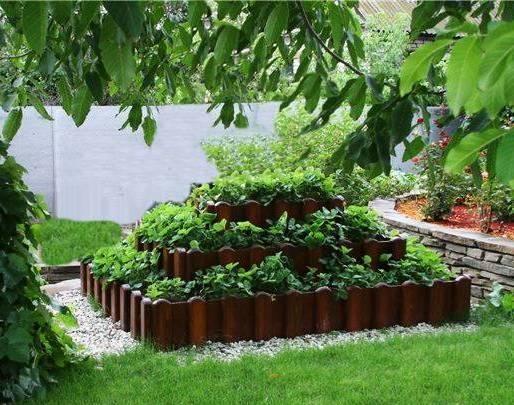
Step vertical kitchen garden can be made one-sided, placing it near the wall, and can be bilateral. Often such facilities are used for planting strawberries, but they are suitable for greenery, for example.
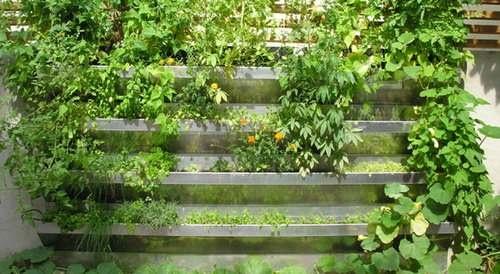
For the same purpose, use old barrels or pipes of large diameter, pre-drilled holes in them in a circle, as well as bulk bags of dense black polyethylene. In the center of such patchs certainly have a device for watering planted plants.
By the way, plastic bags can be used even more original-for example, securing them on an unsightly fence made of metal mesh and planting plants in the resulting ” pockets»:
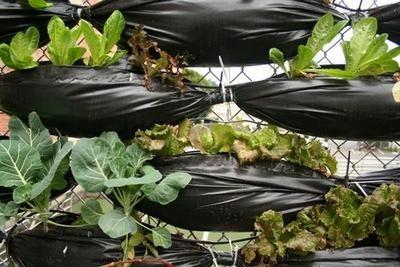
Places on such “mini-gardens” is enough except for salads and greens, but an unusual wall will decorate the suburban landscape for sure. On a blind fence you can grow vegetables in hanging boxes or … plastic bottles))
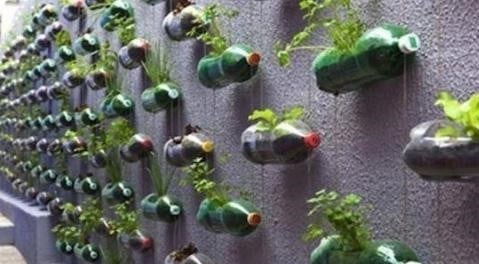
And if you want to plant something more serious, then you will approach made of black spunbond, tarpaulin, burlap or any other suitable material vertical “pockets” that are hung on the wall or fence.
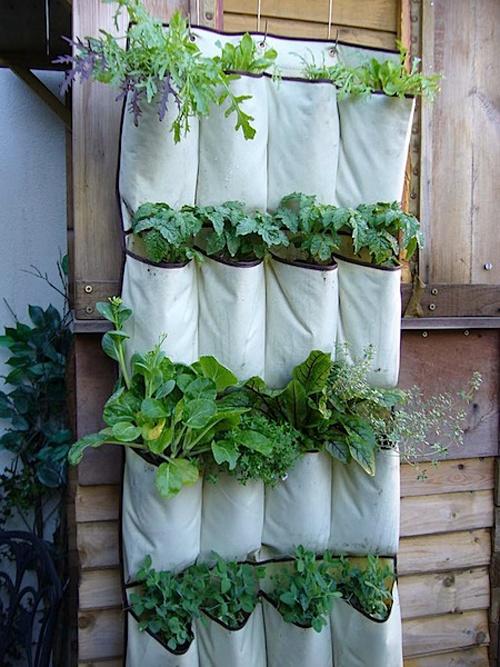
Excellent compact vertical kitchen gardens are obtained from old pallets, which are painted (or simply treated with a protective composition, so that the wood does not rot), sewn from the inside with a cloth (suitable burlap, non-woven covering material, any dense fabric), so that the earth does not fall out, fill the soil and plant plants. This kitchen garden can be put on the terrace and even on the loggia.

Strictly speaking, most types of vertical kitchen gardens are nothing more than containers of various designs. So, have the same advantages and disadvantages. What?
Pluses of vertical kitchen gardens
- Decorativeness. Carefully made vertical structure with plants is always attractive, perfectly decorates the site, it becomes a “highlight”. And the possibilities for design, as examples show, there is an infinite number.
- Space saving. If the land is small, and you want to plant a lot, vertical beds are very helpful — because the area used is minimal, and the structure itself can be placed anywhere: along the walls of the house, barn or summer kitchen, at the fence or on the fence and so on.
- Minimum tillage. In fact, there is nothing to dig, there is simply no place for weeds; it remains only to build a bed and plant plants.
- Mobility. Many designs are easy to move; there are modular options that can be combined to your liking, complement and rebuild.
Cons of vertical kitchen gardens
- Lack of moisture. Like any containers, vertical kitchen gardens require frequent watering. The soil dries up here much faster than in a normal garden, and in the heat the plants can suffer much more.
- Limited soil volume. Most of the designs of vertical beds-it is quite small in size containers. Therefore, they are not suitable for all types of plants, and planted will require additional nutrition.
- Soil freezing in winter. Perennial crops in such beds grow problematic: in the harsh winter frost will destroy the root system, because the soil will freeze through. This should be taken into account when choosing the design of the beds, for example, for strawberries.
Is it possible to get rid of the minuses or at least reduce their value? Completely get rid-no, because their reason — design features. Reduce-Yes, it is quite real.
So, to reduce the deficit of moisture will help:
- hydrogel; a special polymer that is added to the soil during planting. It is able to accumulate moisture (granules swell at the same time), and then the roots of plants take water from them as needed;
- drip irrigation systems; expensive but effective, and costs can be reduced if you collect everything with your own hands instead of buying a finished system.
Limited amounts of soil will not be a problem if grown in such beds greens or vegetables, not particularly demanding to nutrition, with a compact root system. But they still have to feed more often than their counterparts growing in the traditional garden.
Winter troubles will not affect you if you intend to grow on vertical beds annual vegetables and greens. For strawberries and perennial herbs suitable low design with a large volume of soil (in the form of shelves or pyramids), although they may suffer in winters with little snow.
